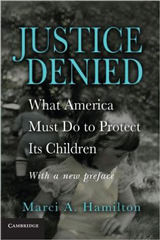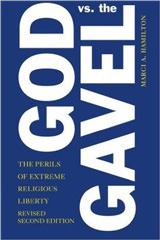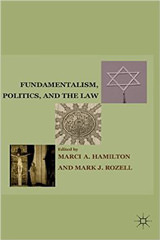On August 14, 2021, New York and Pennsylvania will show their true colors when it comes to taking child protection seriously. New York is striding into the future of child protection while Pennsylvania is mired in toxic politics that endanger children.
New York Opens a Window and Learns About Perpetrators and Institutions Previously Off the Radar
Two years ago, to the day, the New York Child Victims Act window opened. Within days, over 4,000 cases had been filed. Then, when the pandemic shut courthouses, New York added a second year to the window, and by the time it closed nearly 10,000 complaints had been filed. These laws have a lot to offer the victims and their families: they validate survivors, create access to justice, and make it possible to shift the cost of abuse from the victim to the ones who caused it. But they also serve the interests of children past, present, and future.
Revival windows are great educators of the public about the people, institutions, and tactics that endanger children. That’s why CHILD USA has gathered the data on New York’s window here.
First, the number of New York claims is interesting. 10,000 is the most claims ever filed under a window—but it is still a far cry from the Chicken Little predictions the insurance and bishops’ lobbyists throw around. They are always saying there will be an avalanche of claims that the courts won’t be able to handle. It just isn’t true, as New York’s functioning judicial system shows. Besides, in a state of 19.5 million people, statistics tell us that there are likely around 4 million victims of child sex abuse. That makes the 10,000 number look small.
Second, the headlines seem to gravitate to the Catholic cases, but that is because it’s such a large and politically active institution. Child sexual abuse exists across the culture. Of the cases filed under the CVA, roughly half were against religious institutions, including the Catholic bishops and dioceses, but the other half of the cases present a spectrum of contexts including youth-serving organizations like Big Brothers Big Sisters, scouts, athletics, healthcare, camps, schools, and social services. The lesson for parents here is that no matter how kid-friendly an organization appears, it is always wise to stay attentive and protective.
Third, 88% of the school cases involved either a Catholic or public school. Now we know that it is a mistake for any state to exclude either the private or public spheres, despite the lobbying from either the bishops or the teachers’ unions.
There is also the data that isn’t calculable. The window was open for only two years, and cases involving foster care were a tiny percentage, which appeared toward the end. Does that mean foster care is a safe system for children? That seems unlikely as a study in Denmark showed that kids were 10 times more likely to be abused in these settings and another in the United States found a 4-fold increase. It may well be that the closing of the window happened before many victims knew about it or were capable of coming forward. That is an argument for New York to follow Hawaii’s and California’s lead, both of which have passed more than one window.
Without the New York window, we would not have this data that will help New York shape its future policies. We would also not have these 10,000 pending cases that hold the promise of making victims whole and, at the same time, incentivizing institutions to improve their child protection policies. These are concrete results that put to rest the silly objections raised by the insurance and bishops’ lobbyists invested in the coverups, and that shine a light into the future of child protection.
Pennsylvania Stays Mired in Toxic Politics That Endanger Children
Three years ago, to the day, Pennsylvania Attorney General Josh Shapiro filed his office’s mobilizing grand jury report documenting how six Roman Catholic dioceses in the state had covered up child sex abuse. It’s not that anyone was surprised that Catholic bishops had endangered kids by moving predatory priests around, but rather that in 2018, there were still major stories the public had not yet heard. Those who had filed away the Catholic Church’s problems in this arena with the belief that the bishops were taking care of it, now knew the bishops have a long way to go. That was true in 2018, and it’s still true, as this recent peer-reviewed survey of child protection policies of every Catholic Archdiocese has shown. The Report changed the discussion as the world reacted in full-throated support of the victims and rising disgust with this venerable institution.
The Report was met with renewed calls for justice for the victims abused in Pennsylvania, where SOL bills have been repeatedly filed since 2005. It seemed like it might be a wedge against the lock the insurance lobbyist and the bishops had on Republican senators, who had long been the primary barrier. As the pressure grew, and media attention intensified, the senators wrapped their arms around the insurance/bishops’ lackeys typical last stand in this arena: window legislation was supposedly unconstitutional. While the bishops set up compensation funds to clear their ledgers, Pennsylvania lawmakers passed an unnecessary and ultimately doomed constitutional amendment for the victims. There was supposed to be justice in May 2021. It didn’t happen, and they passed another amendment, that will also likely fail and that puts off justice for another two years at least.
While Pennsylvania lawmakers have tortured survivors with dashed hopes, Pennsylvania’s perpetrators and institutions have been given ample time to prey on more children and avoid truly effective child protection policies. Let me be clear: These reckless Pennsylvania lawmakers are responsible for every child being abused right now by a perpetrator who would have been disclosed if a window had opened. As New York’s two-year window confirms, when victims get access to justice, the public and the state receive information that can only improve child protection in the future.









